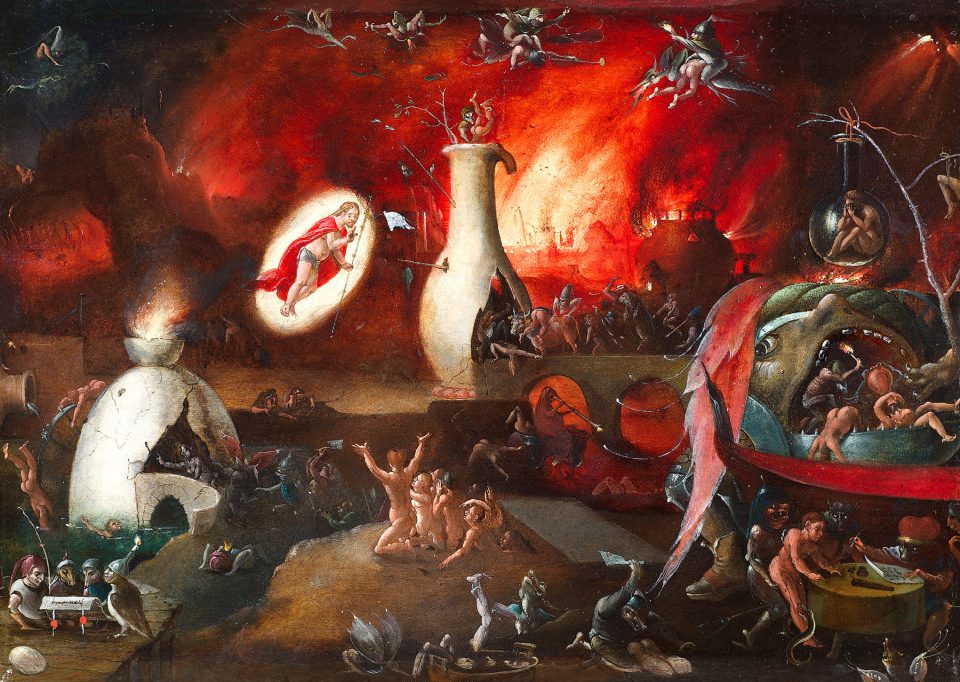In this final installment, I want to share with you a few more probable references to Christ’s descent in Scripture and then tie up a few loose ends on the topic.
There are a series of passages in Isaiah that can be understood to refer to the liberation of the Old Testament redeemed. The clearest is Isaiah 49:6 where the Father speaks to Jesus and says,
It is too little of the thing that you should be my servant to raise up the tribes of Jacob and bring back the preserved of Israel…
Typically this passage is understood in a very metaphorical way, which dismisses what it is really saying. The “preserved” in Israel are clearly not already in Heaven according to this language. They need to be “raised up” and “brought back”. This isn’t just speaking of people alive at the time of Jesus or part of the exile at the time of Isaiah. It makes perfect sense that this is speaking of people who already are deceased or will become deceased before the time of Jesus. These people need to be raised from Sheol.
The same understanding informs the meaning of Isaiah 42:7b,c, “I give you …to bring out the prisoners from the dungeon, from the prison those who sit in darkness.” Jesus did not lead any jailbreak during his earthly ministry. To understand this solely as freeing people from their dungeon of sin, doesn’t quite follow the pattern of the passage. The things spoken of in Isaiah do have a broader spiritual application, but Jesus also actually did these things for some during His earthly ministry (like healing the blind). So for these passages to be understood as a literal liberation from the prison of Sheol makes perfect sense.
Captives are also mentioned in Psalm 68:18, which is quoted in Ephesians and Isaiah 61:1, which is quoted in Luke 4:18.
With this many passages either directly speaking about or alluding to the liberation of the Old Testament redeemed, there is little doubt the Christ’s descent into Sheol accomplished at least this much.
This doesn’t keep modern theologians from being a little embarrassed about the topic of Christ’s descent, also called “the harrowing of hell”. The mythology that grew up in the Eastern Church about this topic leads some to want to dismiss the whole topic as a myth.
Modern people are sensitive about confusing a myth with a historical truth. There are many religious myths in the world including some that hang around Christianity in non-canonical literature. Depending on your view of scripture, you may even consider some biblical stories as fictional. So is this one of them?
Without a doubt, some segments of Christianity have approached the story of Christ’s descent with a degree of embarrassment, preferring to see it as an intentional metaphor of some sort. Also the presence of similar ideas of life after death in other religions makes people wary of the even the idea of Sheol. Adding to the pressure to paint this as a myth is the desire for there to be no Sheol, Hell or final judgment at all.
Still there is a clear testimony in the Old Testament of the expectation of Sheol after death for both the righteous and the unrighteous. There is a reasonable explanation as to why other cultures expected basically the same thing. There is also a future hope that this would be changed. Christ’s descent to Sheol is very reasonably the thing that changed the fate of the Old Testament righteous.
Christ’s descent into Sheol is therefore foreshadowed in the Old Testament, spoke of in the New Testament albeit somewhat obscurely, and clearly testified to in the earliest Christian literature. Together they make a coherent whole.
A cosmology that includes only a heaven, the current universe and a hell has no more proof or disproof from our scientific understanding of reality than does a cosmology that contains a Sheol and an Abyss. We don’t know with certainty where any of these places are but we know enough to doubt that reality is only three-dimensional space.
So is Sheol just a metaphor for death and Christ’s descent just a metaphor for his suffering or burial? You won’t get me to buy into that explanation, and that is saying something. As I embarked on this study I honestly did not know the teachings of either the Orthodox nor the Roman church on this topic. In fact, I would have to admit that I am biased against these church bodies if anything. But, when you start with trying to understand what Sheol is without confusing it with hell or the grave, the testimony of scripture points to a real descent of Christ to Sheol to liberate the Old Testament redeemed and even to attempt to save some of the Old Testament damned. That was a real paradigm shift for me, and a very hopeful one.

